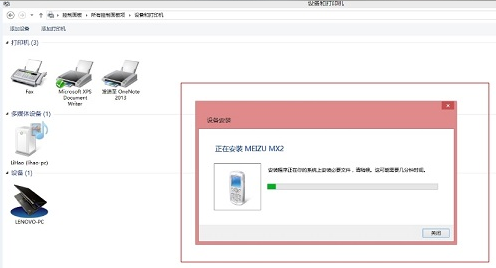I am quite new to Android development. I managed to get data saved to SQLite database. Now, what I want is to view these data when I call viewData(). I have viewData() which shows data as a Toast as I made it as a sample. Now I need these data to show on a new activity using a ListView, but the number of data to show is depending on how many data is in the database at the moment, If user saved 10 items then I want all the 10 items to shown up. How can I do it?
I hope my question is clear.
Thanks in advance.
you could use ListView
declare it in your layout
<LinearLayout xmlns:android="http://schemas.android.com/apk/res/android"
xmlns:tools="http://schemas.android.com/tools"
android:layout_width="fill_parent"
android:layout_height="fill_parent"
android:orientation="vertical">
<ListView
android:id="@+id/list"
android:layout_height="wrap_content"
android:layout_width="match_parent">
</ListView>
</LinearLayout>
in yor activity declare a globar var:
ListView listView;
and onCreate
listView = (ListView) findViewById(R.id.list);
ArrayAdapter<String> adapter = new ArrayAdapter<String>(this,
android.R.layout.simple_list_item_1, android.R.id.text1, values);
// Assign adapter to ListView
listView.setAdapter(adapter);
listView.setOnItemClickListener(new AdapterView.OnItemClickListener() {
public void onItemClick(AdapterView<?> parent, View v,
int position, long id){
// ListView Clicked item index
int itemPosition = position;
// ListView Clicked item value
String itemValue = (String) listView.getItemAtPosition(position);
}
});
datos can be an array that you can populate with data that you extract from your data base and that's the most simple way to show it. if you want to customizise your listView you can create a custom adapter, or in other way the newest element that replace listView is ReciclerView. I hope tihs help you
You can use a SimpleCursorAdapter:
@Override
public void onCreate(Bundle savedInstanceState) {
super.onCreate(savedInstanceState);
ListView answerList=(ListView)findViewById(R.id.answerList);
Cursor mCursor = getData();
startManagingCursor(mCursor);
// now create a new list adapter bound to the cursor.
// SimpleListAdapter is designed for binding to a Cursor.
ListAdapter adapter = new SimpleCursorAdapter(this, // Context.
android.R.layout.two_line_list_item,
mCursor, // Pass in the cursor to bind to.
// Array of cursor columns to bind to.
new String[] {"_id", "answer"};
// Parallel array of which template objects to bind to those
// columns.
new int[] { android.R.id.text1,android.R.id.text2 });
// Bind to our new adapter.
answerList.setAdapter(adapter);
}
private Cursor getData() {
String sq = "Select _id, answer from foo";
Cursor c = db.rawQuery(sql);
return c;
}
I will try to give an in-depth answer to this.
Whenever you want to fetch and display a list of data from the database, you can use a ListView, GridView, Spinner, etc for it.
You can use a CursorAdapter which can make the job of querying and displaying data much more simple and easy.
Here is a basic visual representation of it,

Step 1
Firstly, you need to create a database. As mentioned in your question, it is clear that you know how to create a database and put some data into it. So I am not going into the depths of it.
Step 2
We need to define the layout to be used for the individual items in the ListView and save it as res/layout/item_todo.xml This is just a sample layout, you can design any kind of layout you want to.
<?xml version="1.0" encoding="utf-8"?>
<LinearLayout xmlns:android="http://schemas.android.com/apk/res/android"
android:layout_width="match_parent"
android:layout_height="match_parent"
android:orientation="horizontal" >
<TextView
android:id="@+id/tvBody"
android:layout_width="wrap_content"
android:layout_height="wrap_content"
android:text="Study cursors"
android:textAppearance="?android:attr/textAppearanceLarge" />
<TextView
android:id="@+id/tvPriority"
android:layout_width="wrap_content"
android:layout_height="wrap_content"
android:layout_marginLeft="10dp"
android:text="3"
android:textAppearance="?android:attr/textAppearanceMedium" />
</LinearLayout>
Step 3
Now we need to define an adapter. Here we are using a CursorAdapter which converts a Cursor (that you provide) into Views (defined by your layout).
There are two methods, newView and bindView which we need to override. The newView is responsible for inflating newViews for the first time and the bindView is responsible for binding the data to the Views.
public class TodoCursorAdapter extends CursorAdapter {
public TodoCursorAdapter(Context context, Cursor cursor) {
super(context, cursor, 0);
}
// The newView method is used to inflate a new view and return it,
// you don't bind any data to the view at this point.
@Override
public View newView(Context context, Cursor cursor, ViewGroup parent) {
return LayoutInflater.from(context).inflate(R.layout.item_todo, parent, false);
}
// The bindView method is used to bind all data to a given view
// such as setting the text on a TextView.
@Override
public void bindView(View view, Context context, Cursor cursor) {
// Find fields to populate in inflated template
TextView tvBody = (TextView) view.findViewById(R.id.tvBody);
TextView tvPriority = (TextView) view.findViewById(R.id.tvPriority);
// Extract properties from cursor
String body = cursor.getString(cursor.getColumnIndexOrThrow("body"));
int priority = cursor.getInt(cursor.getColumnIndexOrThrow("priority"));
// Populate fields with extracted properties
tvBody.setText(body);
tvPriority.setText(String.valueOf(priority));
}
}
Step 4
Now as you can clearly see, that the constructor needs a Context and a Cursor. Now we need to query the database and retrieve the data into a Cursor and pass it to the adapter.
// TodoDatabaseHandler is a SQLiteOpenHelper class connecting to SQLite
TodoDatabaseHandler handler = new TodoDatabaseHandler(this);
// Get access to the underlying writeable database
SQLiteDatabase db = handler.getWritableDatabase();
// Query for items from the database and get a cursor back
Cursor todoCursor = db.rawQuery("SELECT * FROM todo_items", null);
Step 5
This is the last step where we need to instantiate the adapter and attach the ListView with the adapter to populate the data.
// Find ListView to populate
ListView lvItems = (ListView) findViewById(R.id.lvItems);
// Setup cursor adapter using cursor from last step
TodoCursorAdapter todoAdapter = new TodoCursorAdapter(this, todoCursor);
// Attach cursor adapter to the ListView
lvItems.setAdapter(todoAdapter);






